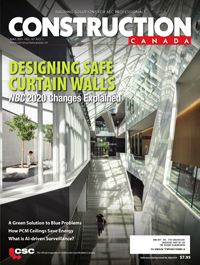Understanding flooring moisture mitigation
When it comes to flooring specification, understanding appropriate moisture measurement, mitigation, and proper floor prep will protect against costly pitfalls in commercial construction. Specifying industry-recognized practices will guard against disruptive remediation. Aside from the cost, moisture related flooring failures cause significant enough disruptions to shut down building operations—resulting in lost revenue, health and safety hazards, and unhappy clients.
While floor preparation and moisture testing (including ASTM F1869-16a, ASTM F2170-19a, and ASTM F710-19e1) have become standard practice, these critical steps can be overlooked due to tight timelines, limited budgets, inexperienced contractors, uninformed specifiers, or installation teams who lack adequate training. The result can be a plethora of flooring problems appearing as early as days or weeks after a floor has been installed, including adhesive degradation, bubbling, cupping, gaps between tiles or planks, and moldy conditions.
For these reasons and more, it is critical for architects, designers, and other specifiers to understand the root causes of moisture-related flooring failure, the importance of ordering standardized moisture testing, and the roles jobsite preparedness evaluation reports and pre-construction meetings play in the flooring preparation process. It could mean the difference between their next success story or a black mark on a firm’s reputation.
Advanced testing standards
Most resilient commercial flooring product designs install over a concrete slab subfloor. Newly poured concrete slabs often take weeks or months to cure, slowly releasing moisture as they dry. When resilient and other non-permeable flooring systems go in place prematurely, they will fail due to the evaporating moisture rising to the surface of the slab.
These moisture problems are only exacerbated by extreme cold, high humidity and other environmental conditions. In many Canadian provinces, daily high temperatures rarely get above freezing from November through April. Coupled with heavy snowfall and high humidity, concrete slabs in unconditioned spaces can be quick to freeze, affecting the strength of the concrete.
As a result, the American Society for Testing and Materials (ASTM) developed standardized moisture testing and mitigation practices, and well-trained and certified floorcovering contractors put them into practice around the country.
ASTM F1869-16a is an anhydrous calcium chloride test covering the quantitative determination of the rate of moisture vapor emitted from the concrete substrate over time. The relatively simple test involves sealing a small dish of calcium chloride on a clean section of concrete under a plastic dome. The salt absorbs the moisture in the localized environment and the weight gain after three days plugs in to calculate the moisture vapor emission rate (MVER).
While ASTM F1869-16a tests the surface of a concrete slab, ASTM F2170-19a goes a step further. This in-situ relative humidity (RH) test provides the quantitative determination of present RH inside a concrete substrate. It formally recognizes the use of in-situ probes as a means of conducting relative humidity testing, and at the time of its adoption, represented a fundamental change in how moisture was measured in subfloors, as well as the degree of accuracy of information testers could obtain through RH meters.
In-situ probes measure the moisture content deeper within the concrete matrix, whereas calcium chloride tests only the surface of the slab. Each probe or sensor requires a hole measuring 19.05 mm (0.75 in.) in diameter and at a depth equaling 40 per cent of the slab’s thickness for slabs drying from one side, or 20 per cent depth for a slab drying from two sides. The probes can also stay in place for weeks at a time to determine if there is a change in moisture levels.
When testing, it is also crucial for installers to consult floor covering product manufacturers, since surface preparation requirements and methods vary depending on the type of substrate, subfloor, underlayment, and floor covering specified.
For example, when applying floor finishes over concrete substrates, some floor coverings require a light grind or shot blast to a specific concrete surface profile while others require a more aggressive mechanical surface preparation in order to achieve a tenacious bond. Slab moisture conditions such as RH, MVER, and the level of alkalinity (pH) also require consideration by installers.
In addition to ASTM F1869-16a and F2170-19a, ASTM F710-19e1 supports the acceptability of a concrete subfloor readiness for the installation of a finished resilient flooring product, ensuring concerns with substrate profiling and potential bond breakage resolve. This assures conditions are acceptable for the installation of the resilient flooring in a timely manner.
Despite the general adoption of these testing methods, there remains an alarming amount of flooring failures. From hospitals to office buildings, hotels to university campuses, fast-track construction, tight budgets and a lack of awareness of these testing standards have resulted $2.4 billion spent annually in the U.S. on remediating moisture and repairing or replacing damaged flooring, according to data from Independent Floor Testing & Inspection.








